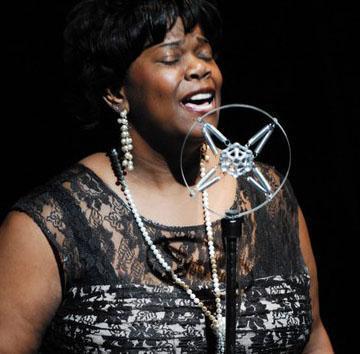
Ma Rainey
小简介\r \r Ma Rainey和Bessie Smith一样,创作了许多尖锐而又自信的作品.但Bessie Smith却是由她一手发掘,并吸收到自己的乐队之中,Bessie成为了她演出的伙伴,受到她的保护和指导.或者她的成绩并无法超越Bessie Smith,但她在19世纪20年代创作的一系列方言Blues却让她独树一帜. \r 她是首个和Paramount这样主流公司签约的女歌手,在这部纪录片里,她享受了"The Greatest Pure Country-Bred Singer Of the Genre"的称号,这位同样来自乡村的女歌手,将她的音乐生涯大部分的时间都用在了到处迁移的"Canvas-Topped"秀,类似我们熟悉的马戏团之类的. \r 她的嗓音沙哑,歌曲常常是讽刺或挖苦,或悲伤的,或刻薄的.这首"Ma" Rainey's Black Bottom描述了Blues音乐和舞蹈间的紧密联系.是当时去观赏演出的人们常常点唱的歌曲. \r \r \r Ma Rainey wasnt the first blues singer to make records, but by all rights she probably should have been. In an era when women were the marquee names in blues, Ma Rainey was once the most celebrated of all — the Mother of the Blues had been singing the music for more than 20 years before she made her recording debut (Paramount, 1923). With the advent of blues records, she became even more influential, immortalizing such songs as See See Rider, Bo-Weavil Blues, and Ma Raineys Black Bottom. Like the other classic blues divas, she had a repertoire of pop and minstrel songs as well as blues, but she maintained a heavier, tougher vocal delivery than the cabaret blues singers who followed. Ma Raineys records featured her with jug bands, guitar duos, and bluesmen such as Tampa Red and Blind Blake, in addition to the more customary horns-and-piano jazz-band accompaniment (occasionally including such luminaries as Louis Armstrong, Kid Ory, and Fletcher Henderson). \r \r Born and raised in Columbus, Georgia, Ma Rainey (born Gertrude Pridgett) began singing professionally when she was a teenager, performing with a number of minstrel and medicine shows. In 1904, she married William Pa Rainey and she changed her name to Ma Rainey. The couple performed as Rainey and Rainey, Assassinators of the Blues and toured throughout the south, performing with several minstrel shows, circuses, and tent shows. According to legend, she gave a young Bessie Smith vocal lessons during this time. By the early 20s, Ma Rainey had become a featured performer on the Theater Owners Booking Association circuit.\r \r In 1923, Ma Rainey signed a contract with Paramount Records. Although her recording career lasted only a mere six years — her final sessions were in 1928 — she recorded over one hundred songs and many of them, including C.C. Rider and Bo Weavil Blues, became genuine blues classics. During these sessions, she was supported by some of the most talented blues and jazz musicians of her era, including Louis Armstrong, Fletcher Henderson, Coleman Hawkins, Buster Bailey, and Lovie Austin. \r \r Raineys recordings and performances were extremely popular among Black audiences, particularly in the south. After reaching the height of her popularity in the late 20s, Raineys career faded away in the early 30s as female blues singing became less popular with the blues audience. She retired from performing in 1933, settling down in her hometown of Columbus. In 1939, Ma Rainey died of a heart attack. She left behind an immense recorded legacy, which continued to move and influence successive generations of blues, country, and rock & roll musicians. In 1983, Rainey was inducted into the Blues Foundations Hall of Fame; seven years later, she was inducted to the Rock & Roll Hall of Fame.\r
